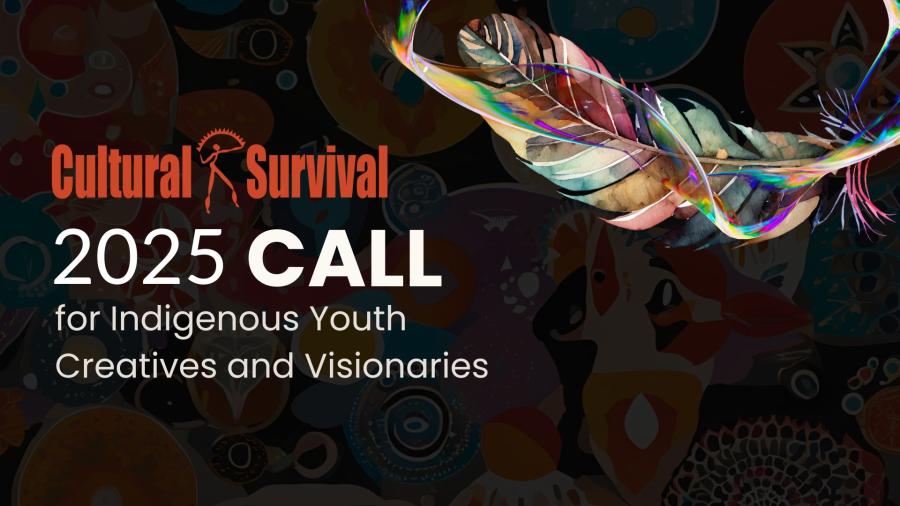Editor’s Note: This special theme section was produced in partnership with the International Center for Transitional Justice, which works to redress and prevent the most severe violations of human rights by confronting legacies of mass abuse. Among the many programs and efforts that ICTJ pursues is the Truth and Memory Program, which supports efforts to preserve memory of crimes committed by governments against their own people. And one focus of the Truth and Memory Program has been truth commissions for Indigenous Peoples. The content in this issue of Cultural Survival Quarterly is drawn from that work and is co-edited by ICTJ’s. Joanna Rice. For more information on their work, go to www.ictj.org.
The struggle for recognition and reparation of Indigenous Peoples is one of history’s longest-standing and most-marginalized justice issues. Indigenous rights activists have worked hard to build the political terrain that the global Indigenous rights movement can now claim at the international level and, in many cases, at the national level as well. Longstanding historic injustices committed against Indigenous Peoples by colonizers are at the root of the circumstances that many Indigenous Peoples face: vulnerability to poverty, environmental destruction, social and political injustice, and conflict. As the human rights community becomes more engaged with the Indigenous rights movement, a shift in thinking is needed, and in many respects well underway, towards looking at the role of longstanding historical injustice in creating current circumstances. Increasingly, it is Indigenous Peoples themselves who are spearheading new truth commissions, in response to mainstream justice-seeking institutions that don’t meet their needs or cultural and political rights.
It is not a simple task to deal with the legacies of past injustice. Amongst human rights workers, efforts to achieve this goal are known as “transitional justice,” a term that reflects the fact that opportunities to deal with the past and restore justice tend to emerge in periods of political transition, at the end of a conflict or in the wake of a widespread political movement. Generally speaking, the toolkit of activities that compose a transitional justice approach includes criminal prosecutions of perpetrators, reparations and compensation to victims, commemorative activities to memorialize the past, reforming flawed institutions, and truth commissions or other activities aimed at recovering the truth about past harms.
Of all of those, truth commissions in particular are being adopted by the Indigenous rights movement as a means of confronting the legacies of injustice. A truth commission is a nonjudicial body set up to conduct independent investigations into a situation of gross human rights violation. The best-known commissions are large-scale, country-wide undertakings: they are multiyear processes that report on and make public the findings of extensive research, much of it conducted by interviewing many thousands of victims and direct witnesses. Where a formal courtroom focuses only on the facts of a specific crime, a truth commission additionally examines the history around violations and the long-term consequences of these acts on those most affected. It will also research and report on the need for structural reforms necessary to prevent the same kind of harms happening in the future. More than anything, a truth commission gives victims of human rights violations an opportunity to have a voice in a supportive public setting.
The national truth commission of Guatemala, the Historical Clarification Commission, for example, worked extensively in Indigenous communities following 30 years of civil war, during which Mayan peoples were the targets of genocide at the hands of the state military forces. The effort gave Mayan survivors a chance to forge a voice and cohesiveness that did not exist before the truth commission. Learning from Guatemala, the Peruvian Truth and Reconciliation Commission played a similar role hand-in-hand with the growing importance of Indigenous rights in Peru.
The linkage of truth-seeking processes and the rights of Indigenous Peoples has begun to reach outside Latin America, as well. The Truth and Reconciliation Commission of Canada, currently in the second year of its five-year mandate, represents the first truth commission process to focus exclusively on crimes against Indigenous Peoples and the legacies of these abuses. Upcoming truth commissions in Nepal and Brazil and the ongoing commission in the Solomon Islands each serve as an opportunity to place special importance on the experiences of Indigenous Peoples in societies that otherwise provide minimal opportunities for them to seek justice.
Despite an emerging link between the Indigenous rights movement and truth commissions, the trend has received a mixed reception both amongst transitional justice practitioners and Indigenous rights activists. In particular, critics worry that truth commissions are designed to push state-building and reconciliation onto a divided population, two objectives that may be inappropriate for Indigenous Peoples. These commissions are designed, after all, to produce a national dialogue amongst citizens that will help reshape the history and values in a divided society. But First Peoples hold a quite different relationship with the state than an interest group or cultural minority. An interest group is a stakeholder in the joint project of statehood, whereas Indigenous Peoples aspire to, and have the inherent right to enjoy, self-determination. Although international legal standards rarely interpret that right to mean full statehood, Indigenous nations have an inherent right to choose their own institutions, languages, forms of government, and other things necessary to prosper as distinct peoples within state borders. So far as a truth commission feels like an effort to build a citizenry with one shared vision of the future, Indigenous Peoples are concerned that such a “state-building” process could undermine their struggle for self-determination.
In practice, however, truth commissions are quite flexible institutions. As mentioned above in the case of Guatemala and Peru, truth commissions were malleable enough that these bodies actually strengthened the place of Indigenous nations within the borders of a larger state. After all, to say that a truth commission is meant to build a rights-respecting and peaceful society does not necessarily imply that this society will have one homogenous political and cultural community. The opposite may in fact be the case, as many truth commissions happen at periods of fluidity in a country’s history, where there are opportunities to influence major institutions and even change constitutions.
Many critics worry that rather than contributing to substantive change, a truth commission actually creates the opportunity for guilty parties to claim that that past is over and dealt with, and that now it is time to forgive and move on. That concern reflects a misconception about how truth commissions work. It is commonly assumed that all truth commissions follow the South African example of functioning as a commission of truth and reconciliation. Not only is this untrue; it reflects a distorted story about the South African process. No truth commission is obliged to include reconciliation or forgiveness amongst its objectives, and pressure on survivors to forgive perpetrators or drop demands for redress should never be a consequence of participating in a truth commission. It is true that the decision to hold a truth commission makes an implicit statement about the desire for reconciliation in the wake of atrocity, but a well-implemented process will be very careful with the message it communicates about reconciling with the past.
Whether to include the term “reconciliation” in the work of a truth commission becomes even more contentious when we are talking about the rights of Indigenous Peoples. In common parlance, reconciling suggests a return to a pervious relationship of co-existence and mutual respect. In the case of Indigenous Peoples it is unlikely that a living memory exists of a relationship with the colonial state worth returning to. The notion of reconciliation also suggests that both parties will now put an end to the injustices that divided the community in the first place, as though those injustices were equal. In the relations of Indigenous Peoples to dominant populations, power relations are heavily skewed, and the economic and social injustices that define this relationship deeply entrenched. Even in the best case, real change is far off on the horizon, making promises of reconciliation feel shallow, if not dangerous to the status of Indigenous rights. It costs dominant populations almost nothing to apologize for past injustice, but Indigenous groups have a lot to lose if the powers-that-be interpret “reconciliation” as an invitation to forget the past and move on.
Although the concerns about reconcilation and state building are valid, participation in a truth commission also represents a rare set of opportunities for Indigenous rights. There are few official justice-seeking institutions able to promote Indigenous rights that are fully independent from every level of government. A truth commission is precisely this: an official yet independent body with high visibility that challenges the national narrative about the relationship of Aboriginal Peoples to dominant populations.
A lot of Indigenous rights work happens through national or regional courts, or through lobbying government services. But even where those institutions are sympathetic to Indigenous rights, success is a mixed blessing, as working with state institutions effectively increases the presence of the state in Indigenous territories. Such mixed victories dull the autonomy of Indigenous institutions de facto even when strengthening them de jure. Truth commissions, on the other hand, are official and independent institutions. A well set-up commission will be established through a long consultation with the groups most keenly affected by the crimes to be investigated. Through the act of building and implementing the process, a truth commission creates a rare opportunity for Indigenous groups and the state to be equal partners.
A truth commission can also benefit the Indigenous rights movement by starting a national conversation about the sorts of crimes that are occurring and the ways such crimes are tolerated in the mainstream. Instead of only identifying an individual or a few people as guilty of the charges against them, as in a courtroom, a truth commission can also discuss the responsibility of institutions or groups and raise critical Indigenous issues like land reform, economic rights and cultural preservation that are not usually on the mainstream agenda.
Navigating the challenges and making the most of the benefits of a truth-seeking process is much more successful when Indigenous Peoples are active participants in creating a truth commission. These discussions need to happen at every stage of a truth commission’s work: negotiations, operations, writing the commission’s report, and the follow-up bodies that grow from the commission. And Indigenous Peoples themselves need to set the standard for what will constitute meaningful consultations. It’s important, too, that disucssions represent everyone in the Indigenous community. A truth-seeking process may appear inclusive of Indigenous perspectives without actually hearing from people at the local level, or from internal minorities in the community, such as youth and women.
There is an additional concern: Because access to educational, political and economic opportunities are limited for many Indigenous Peoples as a result of the social exclusion they face, access to positions that influence the work of a truth commission can also be limited, unless specific measures are taken to prevent reproducing these forms of exclusion. A well-implemented truth commission requires a large staff of researchers, legal staff, health-care workers, and statement takers, to name only a few positions. They also require new or refurbished infrastructure to house the process. As a capacity-building opportunity, truth commissions can have impact well beyond their own borders in terms of the trainings provided, the facilities built, and the job experience gained for people with few other employment opportunities.
The role of Indigenous Peoples in truth commissions is an ever-growing pattern around the world. Many challenges remain, yet the practice of using this mechanism to strengthen Indigenous rights has proven a valuable way to build the justice and self-determination claims of Indigenous Peoples who otherwise benefit from few justice-seeking institutions that operate outside of state structures.
Joanna Rice is an associate of the Truth and Memory Program at the International Center for Transitional Justice. She coordinated this special theme section.



